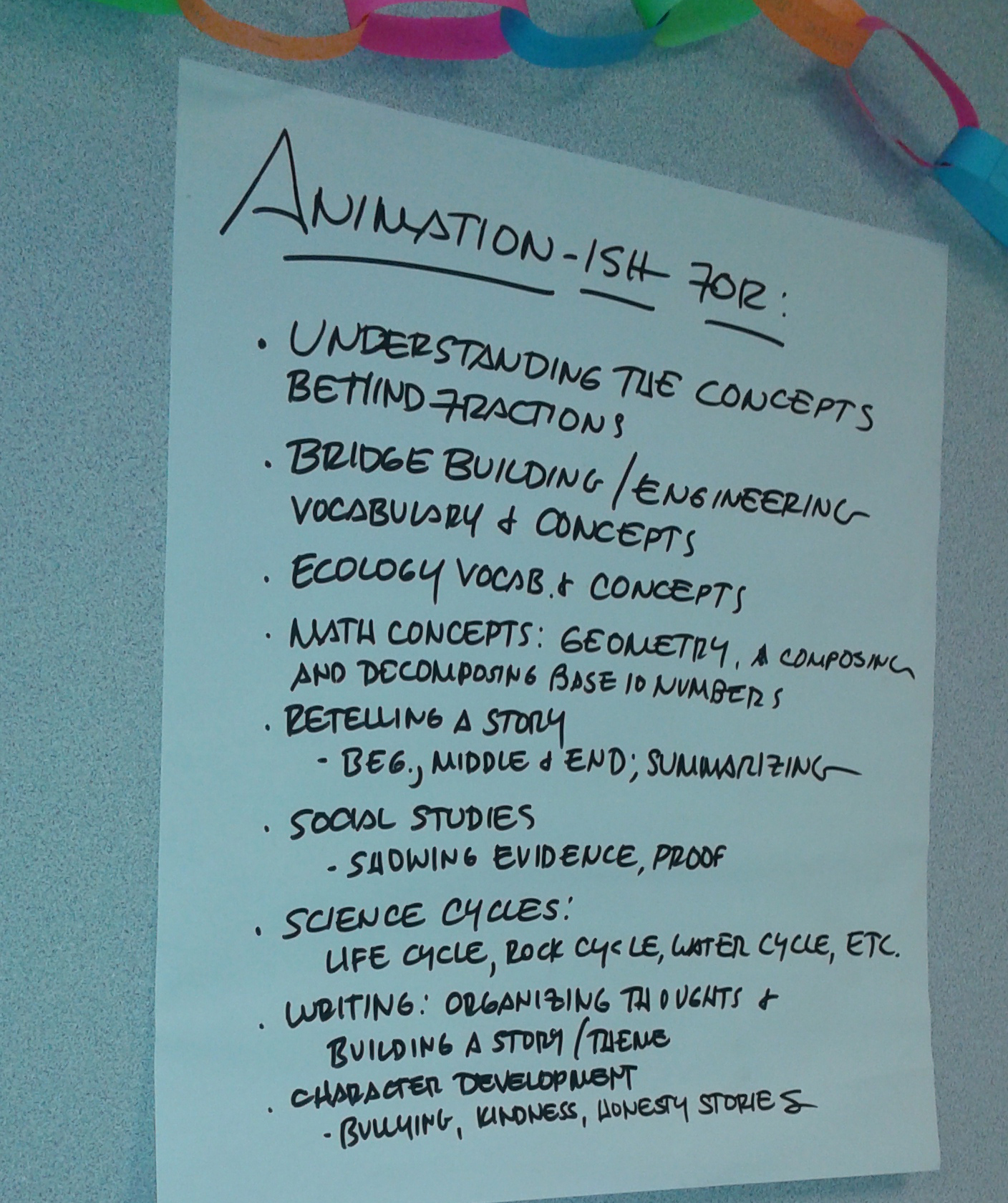FableVision Learning Spotlight Blog
Categories
- Animation-ish 42
- Books 21
- Civics! 2
- Classroom Spotlight 17
- Conferences and Events 20
- Creative Educator 3
- Creativity 25
- Distance Learning 13
- Dot Day 22
- FabClassroom 28
- FabFriday 19
- FabMaker Studio 66
- FabMaker Studio Classroom 13
- FableFive 7
- FableVision Games 3
- Free Educator Resources 36
- HUTCH 1
- Home Activities 5
- In the Classroom 34
- In the News 11
- International Dot Day 23
- Ish 1
- Library 1
- Mapping the World by Heart 7
- Paul Reynolds 10
- Peter H. Reynolds 54
- Professional Development 9
- STEM/STEAM 20
- Storybook Academy 2
- Teacher Spotlight 14
- The Dot 17
- The North Star 2
- Words and Their Stories 1
- Zoombinis 3
FABClassroom Spotlight: Kim Slayton, Burnham Brook School
Meet Kim Slayton from the Burnham Brook School in Canterbury, New Hampshire. Not long ago, the school added Fab@School Maker Studio, a digital design and fabrication program, to their school curriculum. Kim and her students have been using the web-based program in art, science, and social studies projects. We asked Kim to share more about how her students were using the tool and how they plan on taking the program to the next step.
As a teacher, you truly encourage your students to Create Bravely. What tips can you share on encouraging creativity in the classroom?
An important tip to encourage creativity is not to panic. If something doesn’t work out the way it is supposed to, don’t be afraid to try again or find another way to solve the problem. Where there's a will there’s a way to work around any problem. It is also important to have a backup plan, in case your original idea doesn’t come out as you hoped it would. Finally, taking notes on what did and didn’t work helps gives the learner a general sense on how to solve the problem in the future.
How are you using Fab@School Maker Studio in the classroom?
We use Fab@School Maker Studio in art class for making sculptures, as well as creating boxes to store small art projects. The program is especially helpful in demonstrating concepts in science and social studies. To top it off, I also make paper masks for my dyslexic students, as well as other teachers for their students.
What has been an “aha” moment using Fab@School Maker Studio?
I have a student who, due to birth complications, has only four fingers on one hand. This makes it especially difficult for her to use scissors. She was so excited and amazed when she came across the Fab@School Maker Studio program. She was able to plan and create a very complex paper art project without difficulty [and cut it out with the digital cutter]. It was a great “aha” experience when she finally saw her concept come to life.
You work with learners of all ages and abilities. How have you used Fab@School Maker Studio with every student?
Some of my students have been using Fab@School Maker Studio on their own computers, while others explained what they wanted and I designed it on my computer. Typically, the students sketch out their desired finished product, and then we work together to figure out how to properly place the nets. My students and I have also used some of the 3D Ready-Made projects, such as the castle and automaton, for writing prompts and story mapping.
What is next? Any cool projects in the works!?
The student who has difficulties using scissors really likes horses, so we will be working on building an automaton with galloping horses instead.
Can you tell us a bit about your school?
Burnham Brook is a small private school founded in 1982 by Barbara and Walter Howell. All teachers use multisensory structured language instructions to teach their students. Each student is provided with an experience and then we attach a specific language to that experience. This allows them to take ownership for their learning, as well as develop a deeper foundational understanding of the concepts.
Instead of dividing the students into grades, they are instead grouped together based on their ability and language processing styles. The school consists of students with average, above average, and gifted intelligence. Some students have been identified as having a learning disability, while some have no learning difficulties but weren’t being challenged in their local public schools. All of the same types of classes meet at the same exact time, so if we need to change a student’s group, it would not disrupt his or her overall school schedule.
Is your classroom a FabClassroom? We would love to feature your school in an blog post! To be featured in an upcoming post, send an email to info@fablevisionlearning.com. You can also tweet your photos with the hashtag #FabMakerStudio! For more posts featuring Fab@School Maker Studio, click here.
FABClassroom Spotlight: Arrowwood Elementary
From the library to the classroom, Arrowwood Elementary is a FABschool. Earlier this year the neighborhood school in Douglas County, CO added Fab@School Maker Studio, a digital design and fabrication program, to its STEAM curriculum. Recently, Dana Palmer shared a bit about how students are using the tool and the plans for the future.
As a STEM/STEAM teacher can you share a bit about the importance of introducing STEAM concepts in elementary school?
I was the "tech lab teacher" for the first 8 years of my career - straight tech lab activities devoid of creativity did not help students develop a deeper understanding of concepts. I found students cutting and pasting information from the internet directly into PowerPoint and calling it "technology integration.” They were unable to explain concepts in their own words; they were unable to relate concepts to their lives or other applications. With the hands-on creative approach of STEAM that I use, students are highly engaged and have a much deeper understanding of concepts.
How are the students at Arrowwood Elementary School using Fab@School Maker Studio?
We are at the starting stages - our older students are creating manipulatives for younger students. We reworked an old lesson that used straws and pipe cleaners to make 3D prisms with Fab@School Maker Studio prisms created by students.
For our older students, they are learning to be creative and do for others-creating something another student will use to learn has been really exciting for them, and the younger students are receiving top quality manipulatives made by school mates.
What has been the “aha” moment?
When I looked at last year’s "prisms" compared to this year’s it is evident that they are accurate- having accurate prisms allowed students to better understand planes, vertices, etc...
They got the "correct" answer quicker and were able to understand the correlation between sides, vertices, etc..
What is next?
Looking to create a fabrication center in our library - great software - easy to get started with and reasonable equipment prices will make this a reality much quicker than I thought possible.
Is your classroom a FabClassroom? We would love to feature your school! To be featured in an upcoming post, send an email to info@fablevisionlearning.com. You can also tweet your photos with the hashtag #FabMakerStudio! For more posts featuring Fab@School Maker Studio, click here.
FabFriday: From Snow Forts to Bees, First Graders Design with Fab@School Maker Studio
Welcome to FabFriday, a blog series that highlights Fab@School Maker Studio in the classroom. For this week's FabFriday we meet Karen Wolff's first grade class at the Boyden School in Walpole, Ma. This post first appeared on Mrs. Wolff's blog, The Wolff Den.
What a fun week we had building a snow fort! The idea started by exploring with Fab@School Maker Studio software on our Chromebooks. We experimented with different shapes and connected them. From there, we learned how to make 3-D solids. We were going to create a snow village with our solids, but instead decided to build a snow fort! We started by creating cubes with the Fab@School Maker Studio, but found that they were too small to build with. We even tried gluing magnets in the cubes to make they stick together, but in the end decided on choosing another solid – rectangular prisms. We went back to the Chromebooks and figured out how to create them and then built our snow fort!
We also created snowflakes to use with the Bee-Bots.
Speaking of bees, we read a story about Honey Bees this week. We learned about the long “u” sound and the two sounds “y” can make at the end of a word. For example, in the word “sunny,” the “y” sound like an “e," but in the word, “fly,” the “y” sounds like an “i.” We also talked about the life cycle of honey bees. We diagramed the bee life cycle using Kid Pix and learned about the anatomy of a bee by creating them with the Fab@School Maker Studio.
In math, we are working with fact families. We learned that all fact families have three numbers. We can make two addition sentences and two subtraction sentences with the same three numbers.
In social studies we’ve been learning about oceans and continents. We know there are different kinds of land, like plains and mountains and different types of water, like rivers and lakes. We also talked about natural resources like water and wood.
How is your classroom using Fab@School Maker Studio? We'd love to share YOUR tips and ideas! For more FabFriday posts, click here. Send your photos to info@FableVisionLearning.com for a chance to have them featured on the next FabFriday!
Henry Herz Interviews FableVision Founder Peter H. Reynolds
Have you ever wondered how FableVision started? Well your questions will soon be answered. Henry Herz, a writer for children's fantasy and science fiction, recently sat down with FableVision founder Peter H. Reynolds to ask him a few questions regarding his experience in writing and illustrating children's books. The following article first appeared on Henryherz.com.
FableVision founder Peter H. Reynolds
H: For what age audience do you write?
P: I create picture books–often referred to as children’s books, but I write them for all ages.
H: Tell us about your latest book.
P: Playing from the Heart was recently published by Candlewick. It’s a story about a boy named Raj who discovers a piano in his house. His playful and joyful explorations are followed by years of lessons. Many years later he rediscovers the original joy of his childhood “playing.”
H: What do you hope readers will get from reading that book?
P: I hope the book encourages us to hold on to joy we knew as children, but also to encourage parents and teachers to allow kids play–as well as themselves. Kids don’t need instructions in the sandbox. They can play for hours with no guidance and no assessment. There is no pressure that their sand playing abilities will be tested. We don’t have to be great at things that bring us joy and conversely, sometimes the things we are good at don’t bring us joy. These are ideas that fascinate me.
H: What aspect of writing or illustrating do you find most challenging?
P: My biggest challenge is to keep the energy and looseness of my original sketches. Traditional publishing involves a team and a process of sketches, comments, editing, revisions, finals, revisions to finals–it can yield some polished results, but it can also wear down the original, raw energy. My challenge is to shelter that spark through the process.
H: I’ve experienced the same thing with my picture book manuscripts. I have to be careful not to allow critiques to mask the original voice and heart of the story.
H: What is a powerful lesson you’ve learned from being a writer/illustrator?
P: Creating a moving and memorable story is one of the hardest math problems you’ll ever solve. The logic of a story is the backbone. Keeping the art and text lean and sparse allows the backbone to stand strong and not get lost.
H: I write, but do not illustrate. I remember, when I first started writing, how hard it was for me to let go – to not include much scene description, to not add copious art notes. It’s hard trusting someone (the illustrator) you’ve never met.
H: What has been a memorable experience that you never would have had if you had not been a writer/illustrator?
P: A 6th grade girl reached out to me and shared how my book Ish changed her self-identify. She had struggled with being a perfectionist. My book had helped her see things in a whole new way. This made me aware of the impact my work could have on people around the world. It amazes me that I can touch peoples lives without ever meeting them.
H: Yes, the amazing power of books and the internet.
H: What advice would you give to aspiring authors or illustrators?
P: Let it flow, not just work hard. In fact, the “working hard” can often dull your instincts. Just let it flow. Your way. Your journals belong to you. You never have to share them unless you find something in those pages that you feel needs to be shared. My other advice: keep going, never stop.
H: Yup. Never stop learning. Never stop writing. Never stop submitting.
H: Do you have any favorite quotes?
P: “Be ashamed to die until you have won some victory for humanity.” — Horace Mann
“Pessimism is destructive. Realism lacks imagination. Optimism inspires and opens doors.” — Bert Jacobs.
This is a little poem I heard when I was 15 and it has stuck with me all these years: I Meant To Do My Work Today by Richard LeGallienne
I meant to do my work today,
But a brown bird sang in the apple tree,
And a butterfly flitted across the field,
And all the leaves were calling me.
And the wind went sighing over the land,
Tossing the grasses to and fro,
And a rainbow held out its shining hand,
So what could I do but laugh and go?”
H: Beautiful. Plus, ode to ADHD.
H: Do you have any strange rituals that you observe when you work?
P: I like being barefoot while I draw and write. I haven’t really thought too much about it, but I suppose it could be connected to the freedom I felt when we moved to the grassy suburbs of Chelmsford, MA from the city of Somerville, MA when I was 6 years old. The first thing I did when I jumped out of the car at our new house was to take my shoes and socks off and run through the dewy grass. By the way, lot of my character are shoeless.
H: If you could have one superpower, what would it be?
P: Instant transport. Blinking my eyes and being in a new place. I am eager to experience the entire planet, meet as many people, experience as many cultures as I can, but traditional travel is exhausting and time consuming. I’d love to blink and be in India. Blink: Iran. Blink: South Korea. Blink: Brazil. Blink: the International Space Station. I am certain the experiences would inspire new insights and stories.
H: That WOULD be handy. Plus, no waiting in airport lines.
H: If you could have three authors over for dinner, who would it be?
P: DEAD:
Aesop – I’m a big fan of fables.
William Steig – I had the pleasure of one dinner with him. We painted together. I’d love to do that again.
Charles Dickens – He was a champion of the underdog. His books captivated me as a young boy.
ALIVE:
Tom Robbins – I’m a huge fan of his quirky, brilliant brain.
Judy Blume – I have had the honor of meeting her and creating covers for some of her books, but I’d love to have a meal with her.
Any elementary school kid – They are natural storytellers. Honest. Funny. Inspiring.
H: Next day, 4,329 elementary school kids show up at Peter’s house…
H: What is your favorite creature that exists only in literature?
P: My recent favorite is the Snatchabook (featured in the book by Helen and Thomas Docherty)
H: What do you like to do when you’re not writing?
P: I love being with my kids. My 29 year old daughter, Sarah and my almost 5 year old, Henry Rocket. I also love spending time in my wonderful downtown of Dedham, MA and more specifically, in my bookshop: The Blue Bunny.
H: I approve wholeheartedly of the name Henry Rocket and an author owning a bookshop.
The Blue Bunny bookstore located in Dedham, MA
H: What would you like it to say on your tombstone?
P: That is one project I’d prefer not to think too much about. I am absolutely stunned thinking that this blessed journey on Earth has to end. I don’t think the tombstone needs to say anything. My books, films, work will do that for me. You DID make me imagine a tombstone that was designed by kids. OR a big stone dot that people would be encouraged to write on, paint on, make their mark. That would make me smile.
H: Giant stone dot with paint set it is – hopefully a long time from now.
H: Where can folks find your work?
P: All sorts of places. My bookshop in Dedham, MA. Your local library and indie bookshop, I hope. For more info, see my website.
Thanks, Henry. I enjoyed pondering your questions and sharing my thoughts with your readers.
H: Thanks for spending time with us, Peter. This interview is also posted on the San Diego Children’s Books Examiner.
Can't get enough of Peter? Click here to read more about FableVision's founder.
Wrightsboro Elementary Students Make Their Mark with Dot Song!
Decked in dot-covered artist aprons and French berets, the paintbrush wielding students of Wrightsboro Elementary wowed the crowd at the 27th Annual Best Foot Forward showcase in New Hanover County with their rendition of Emily Arrow’s “The Dot Song” inspired by Peter H. Reynolds’ book The Dot. A multi-age group of nearly 40 students sang, danced, and acted out the story of The Dot while creating a dot of their own live on stage, which was revealed at the end of the performance. Lead by their music teacher, Shannon Flowers, their art teacher, Bron Guthrie, and teacher leader, Brandi Laney, the piece was a huge success and one of the most memorable performances of the night. Congratulations to the teachers and students of Wrightsboro Elementary for making their mark!
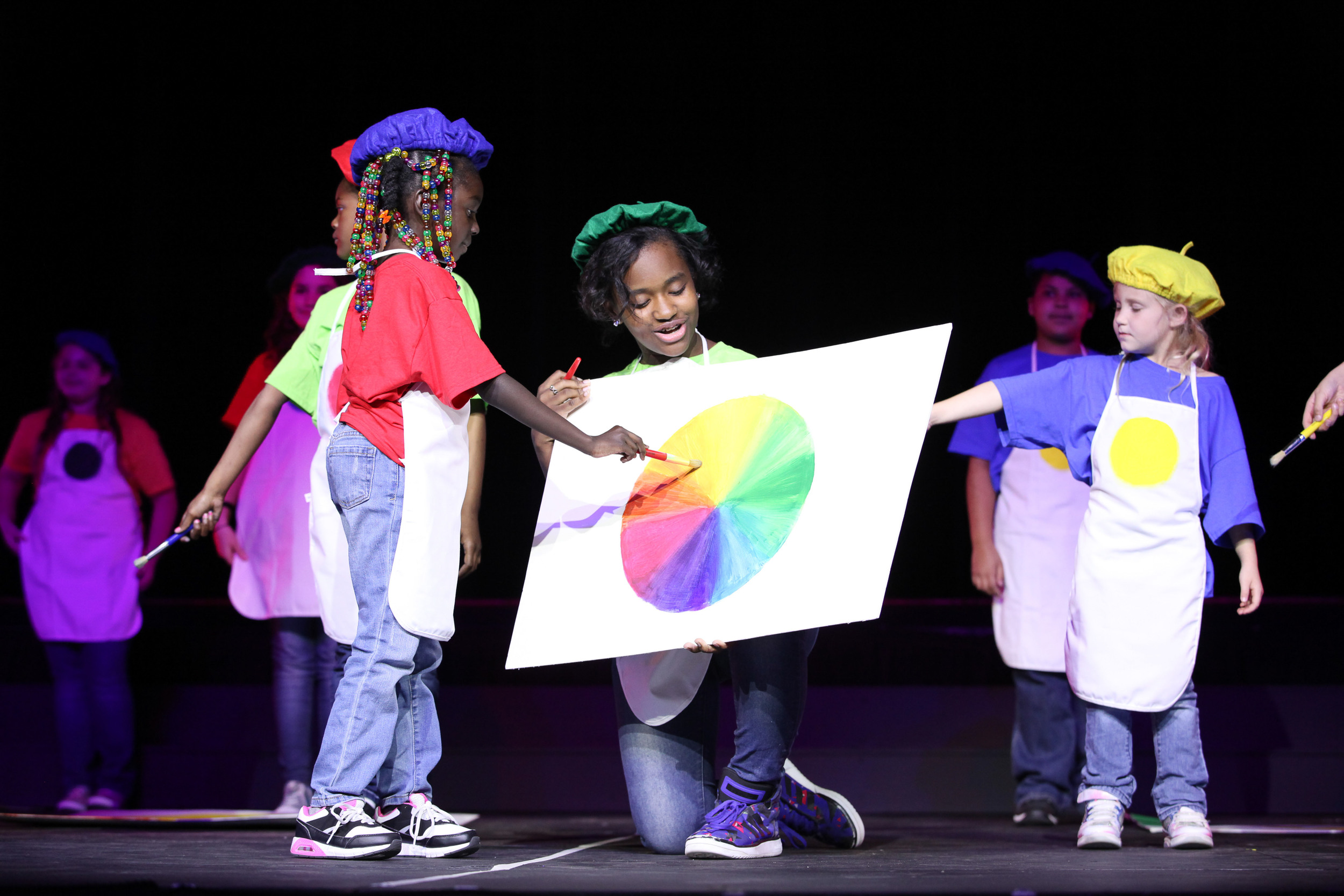
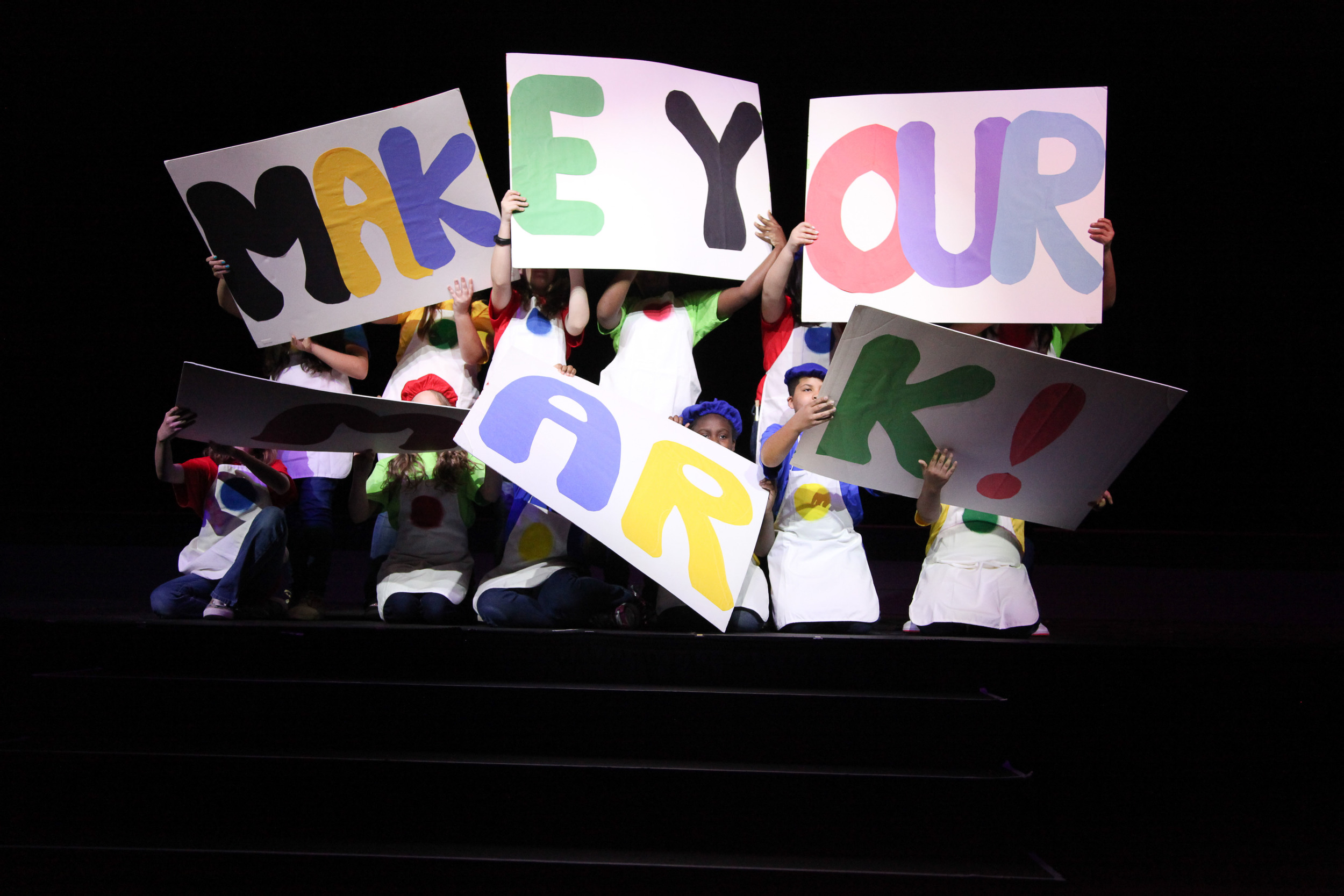
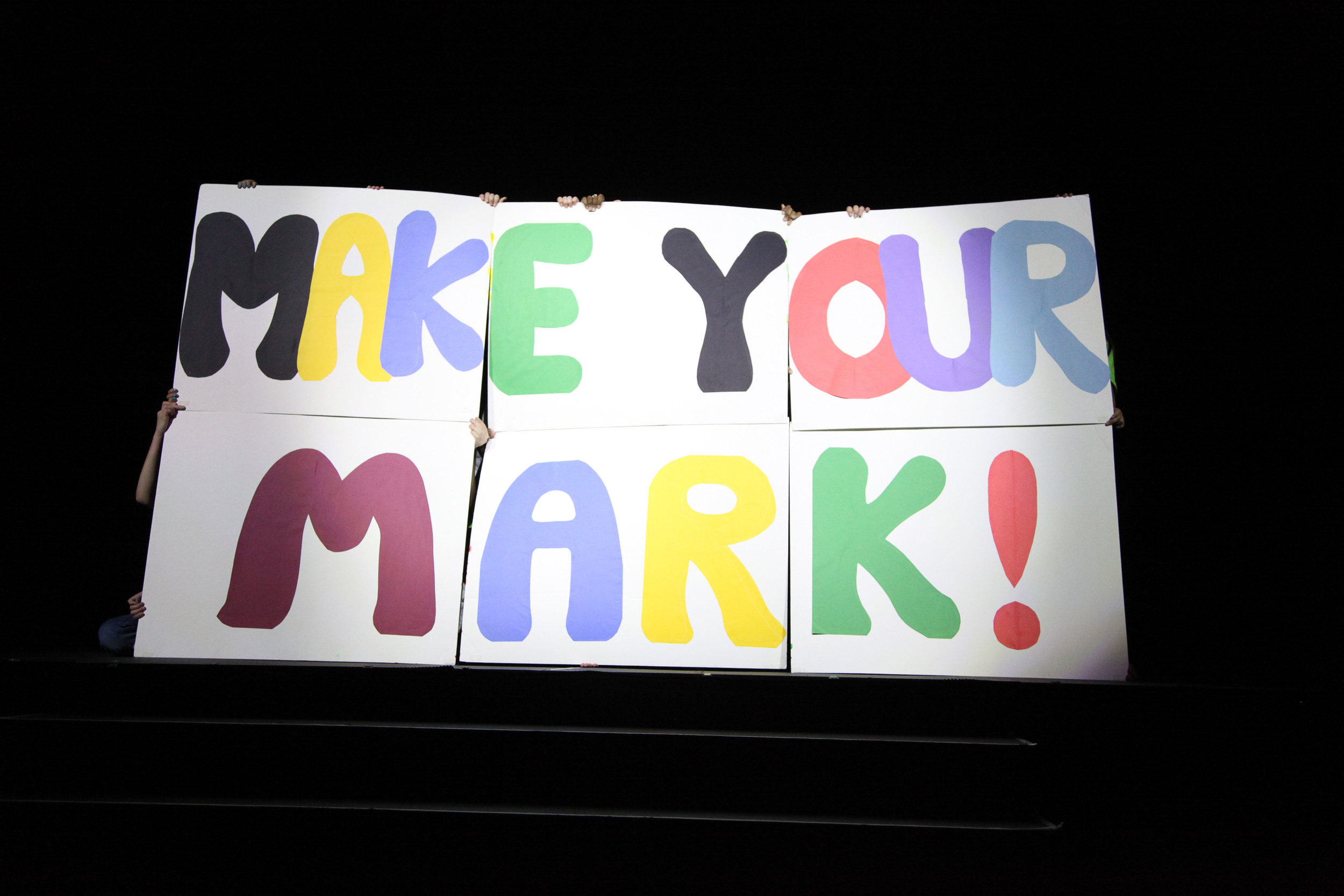
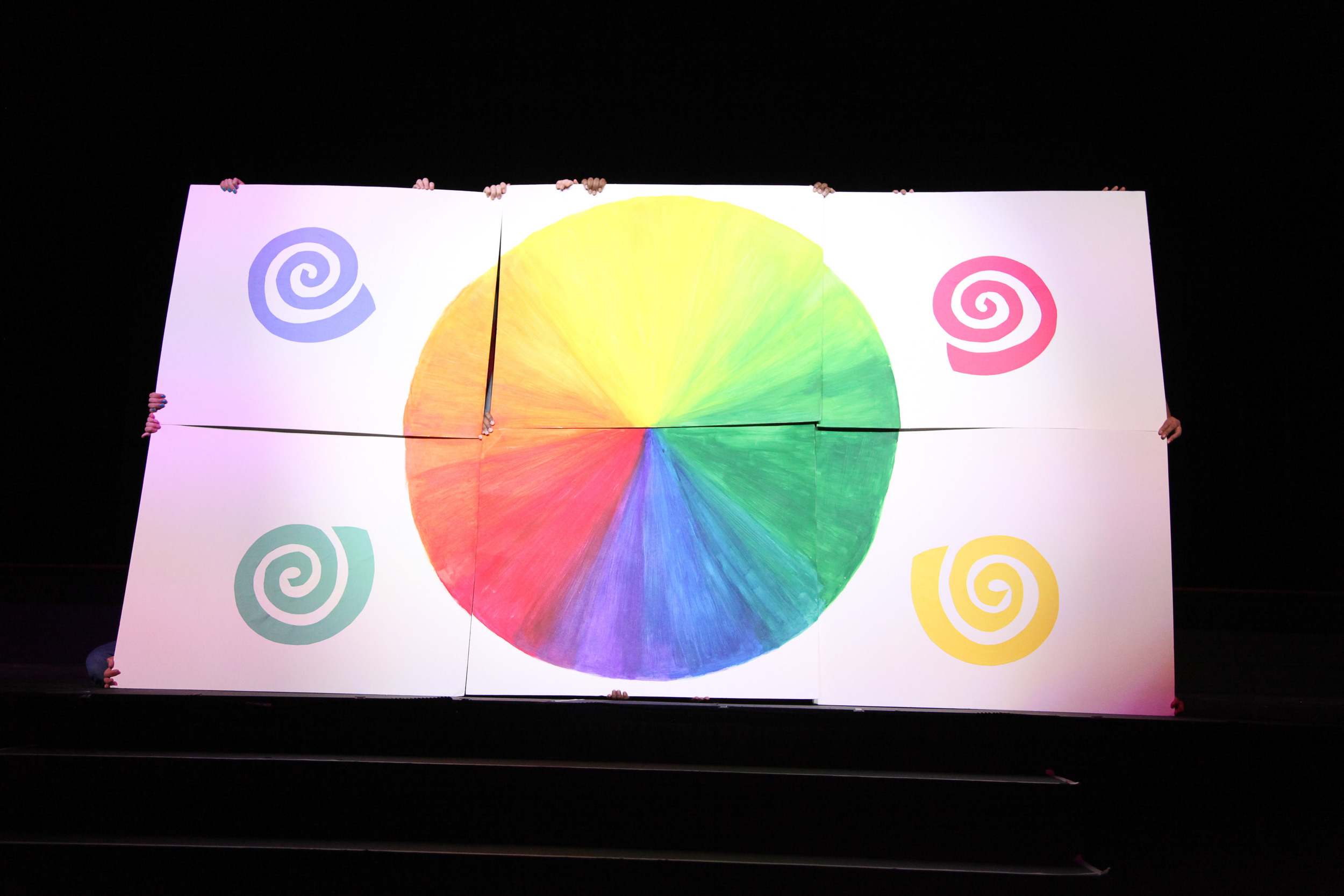
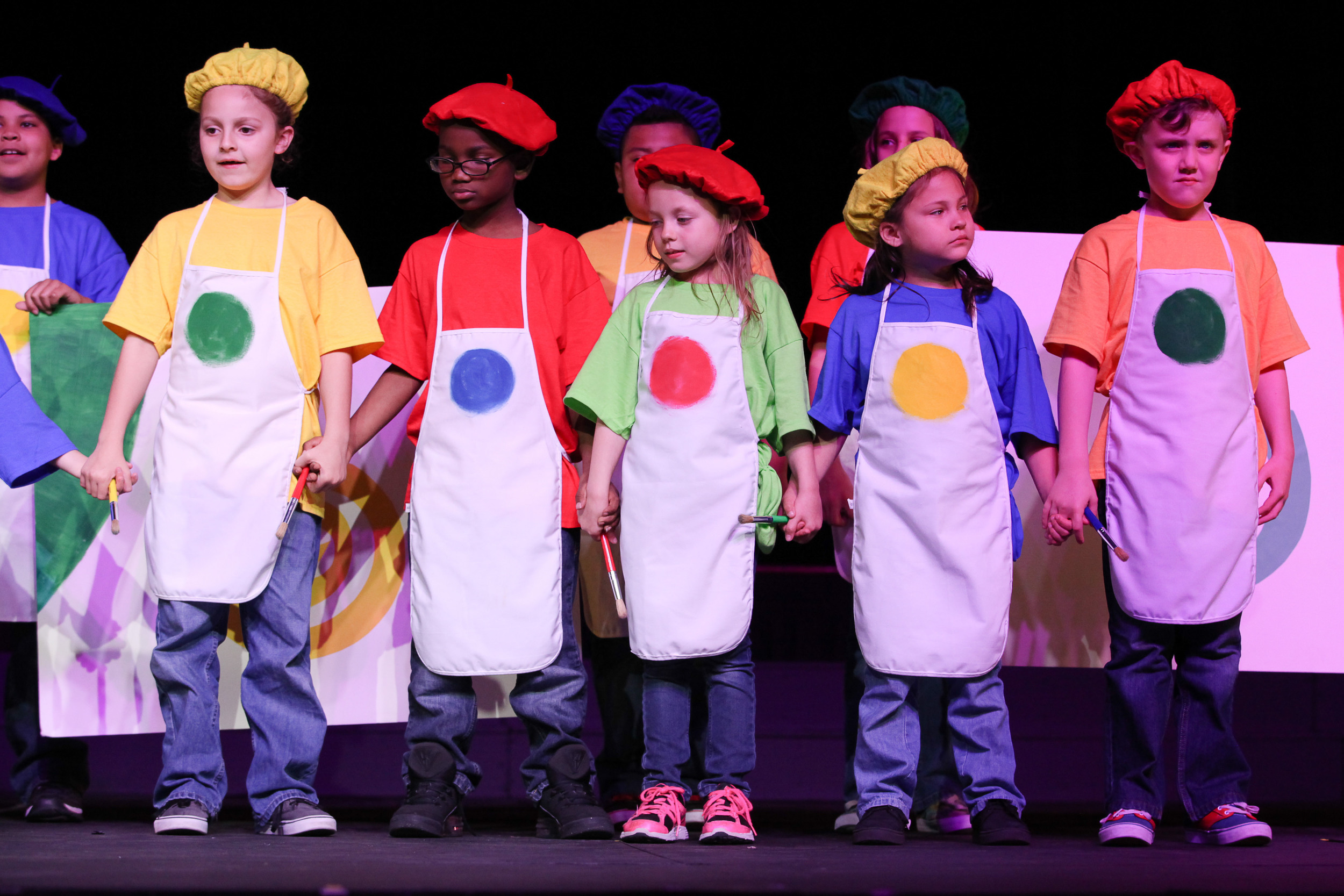
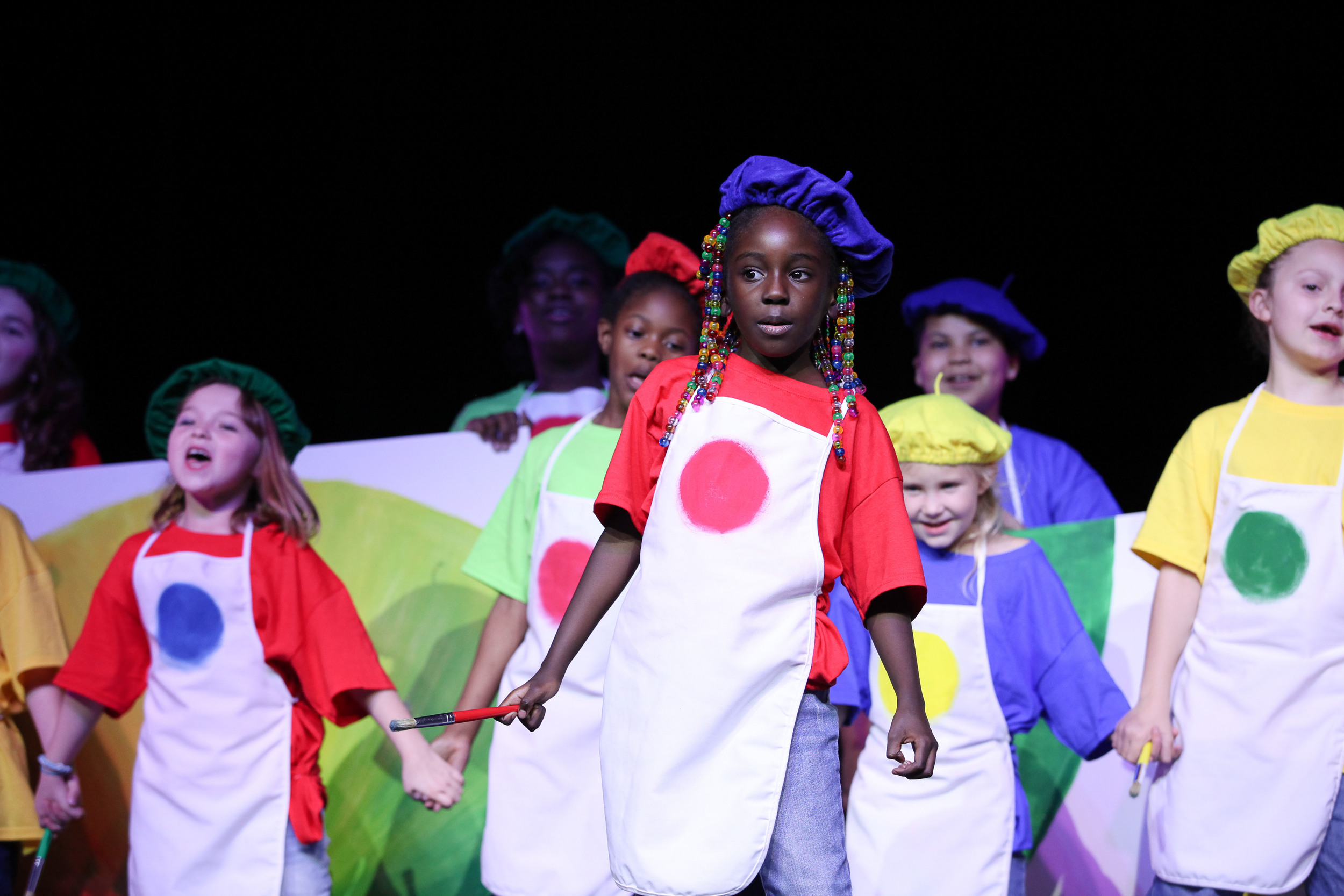
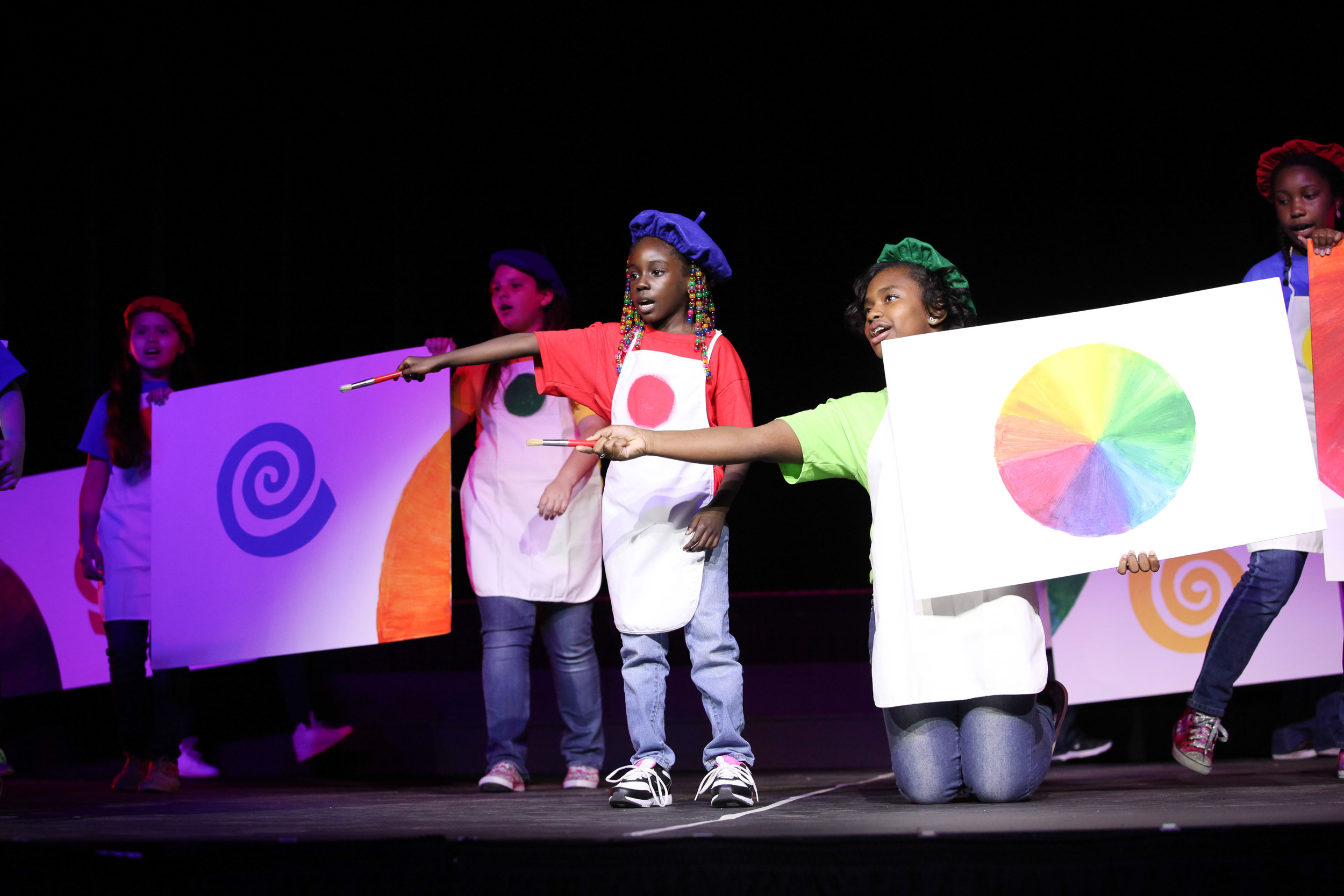
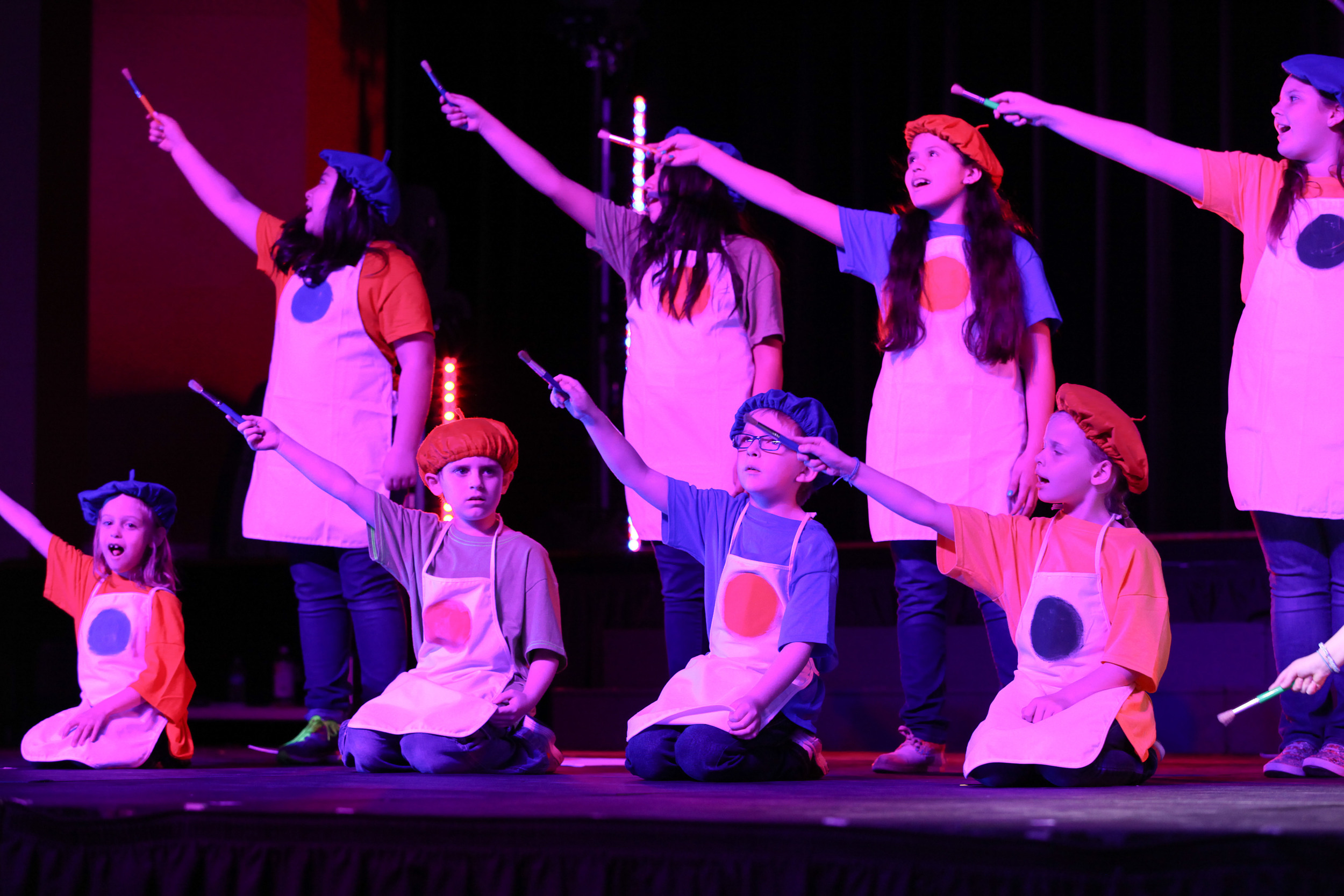
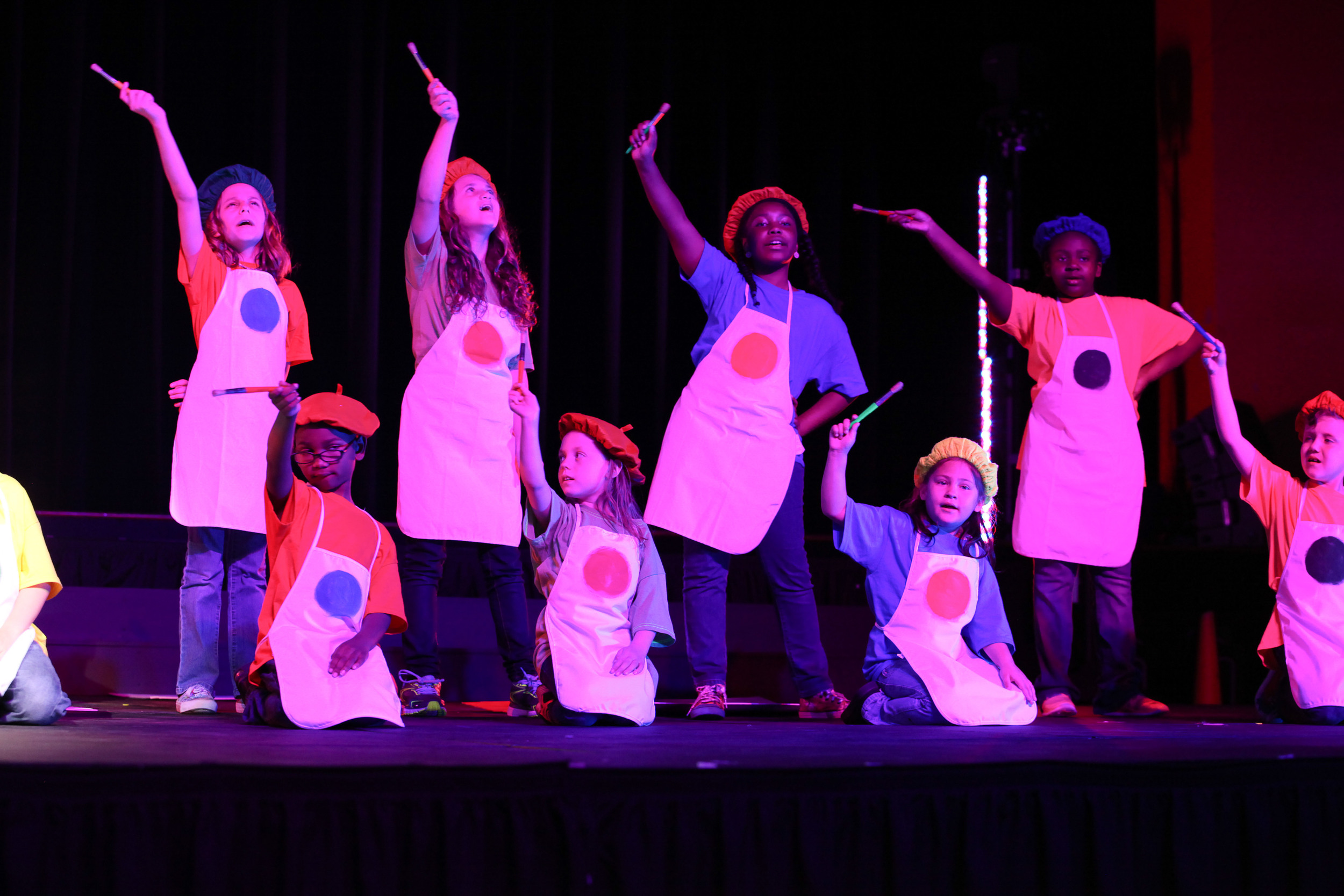

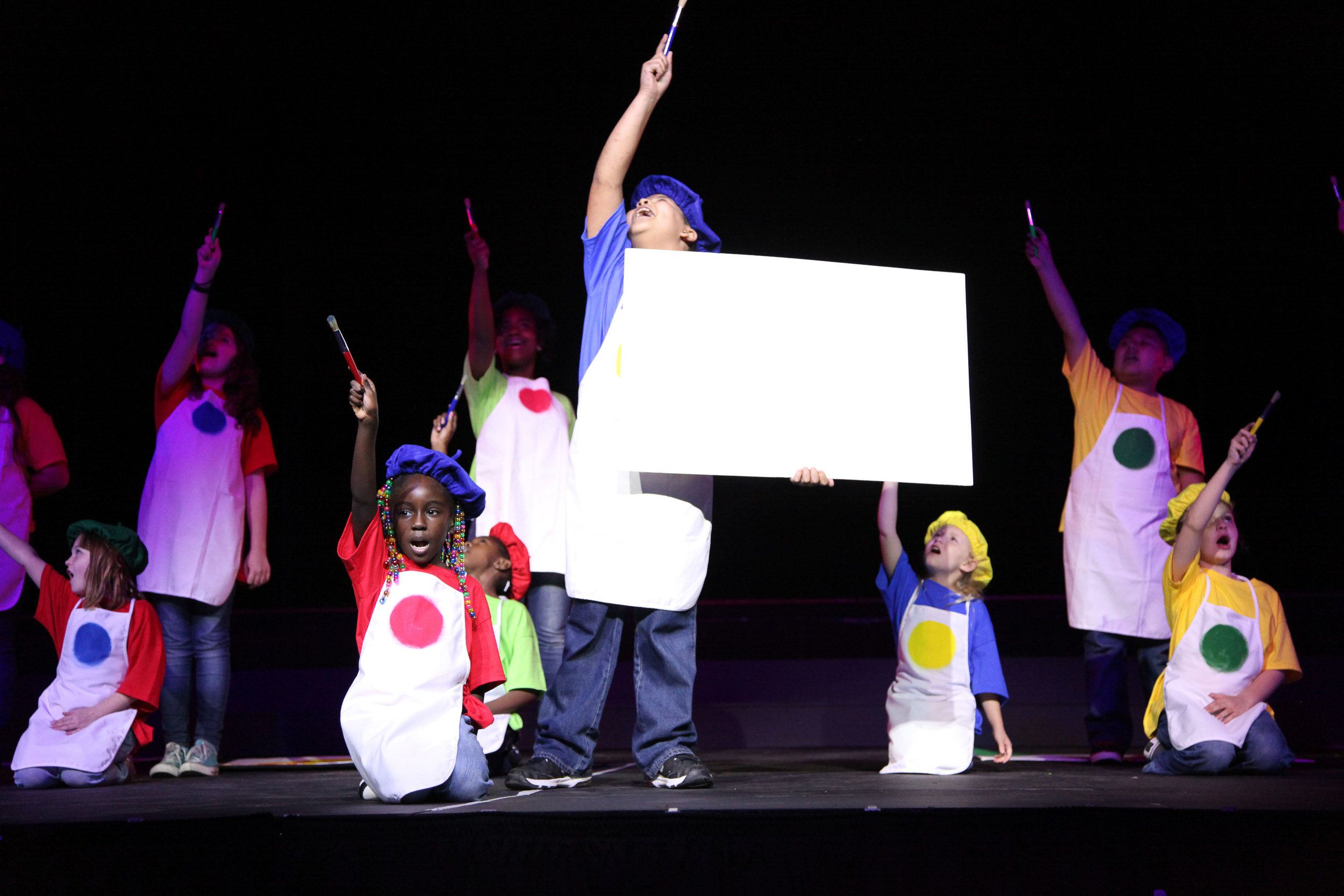
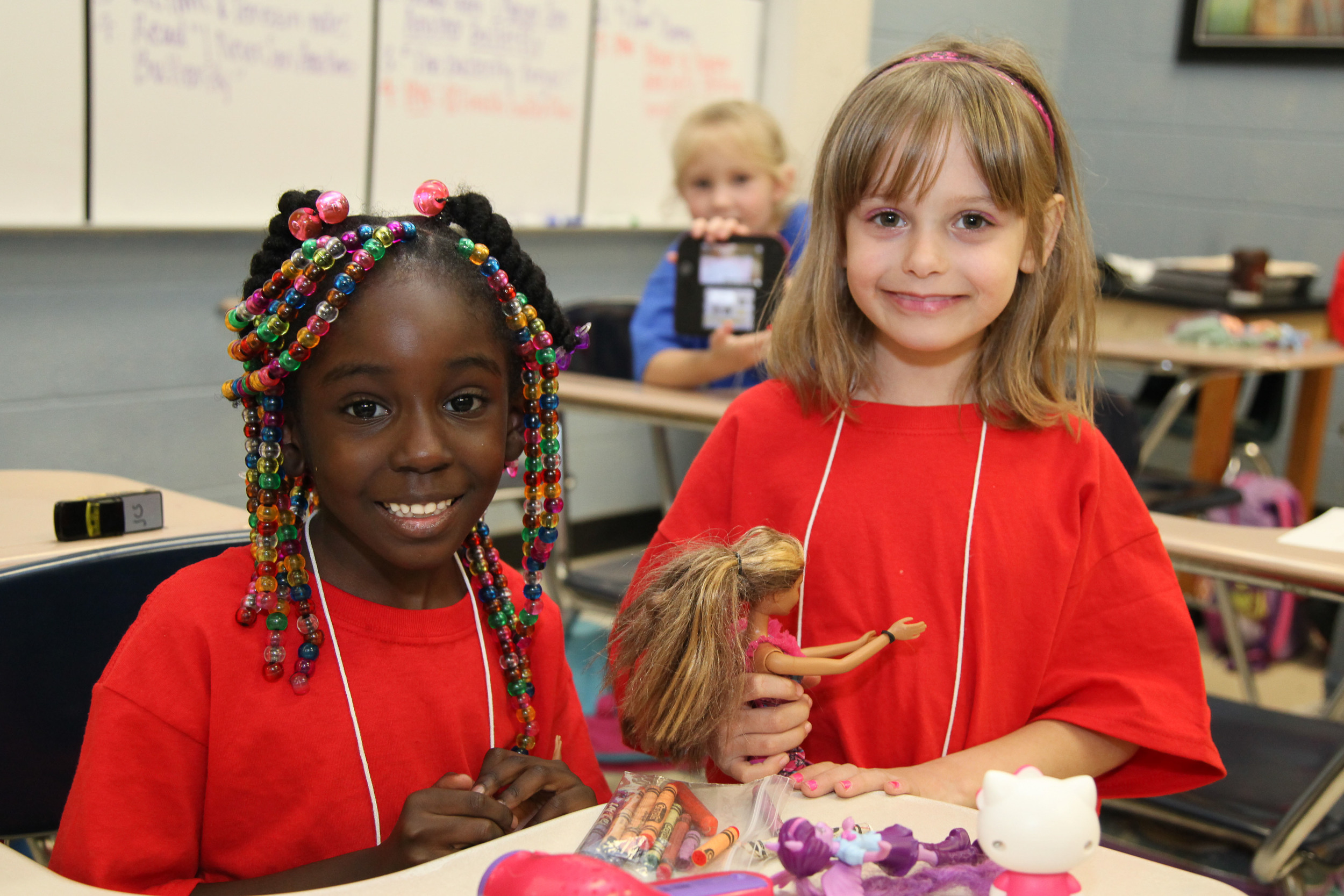
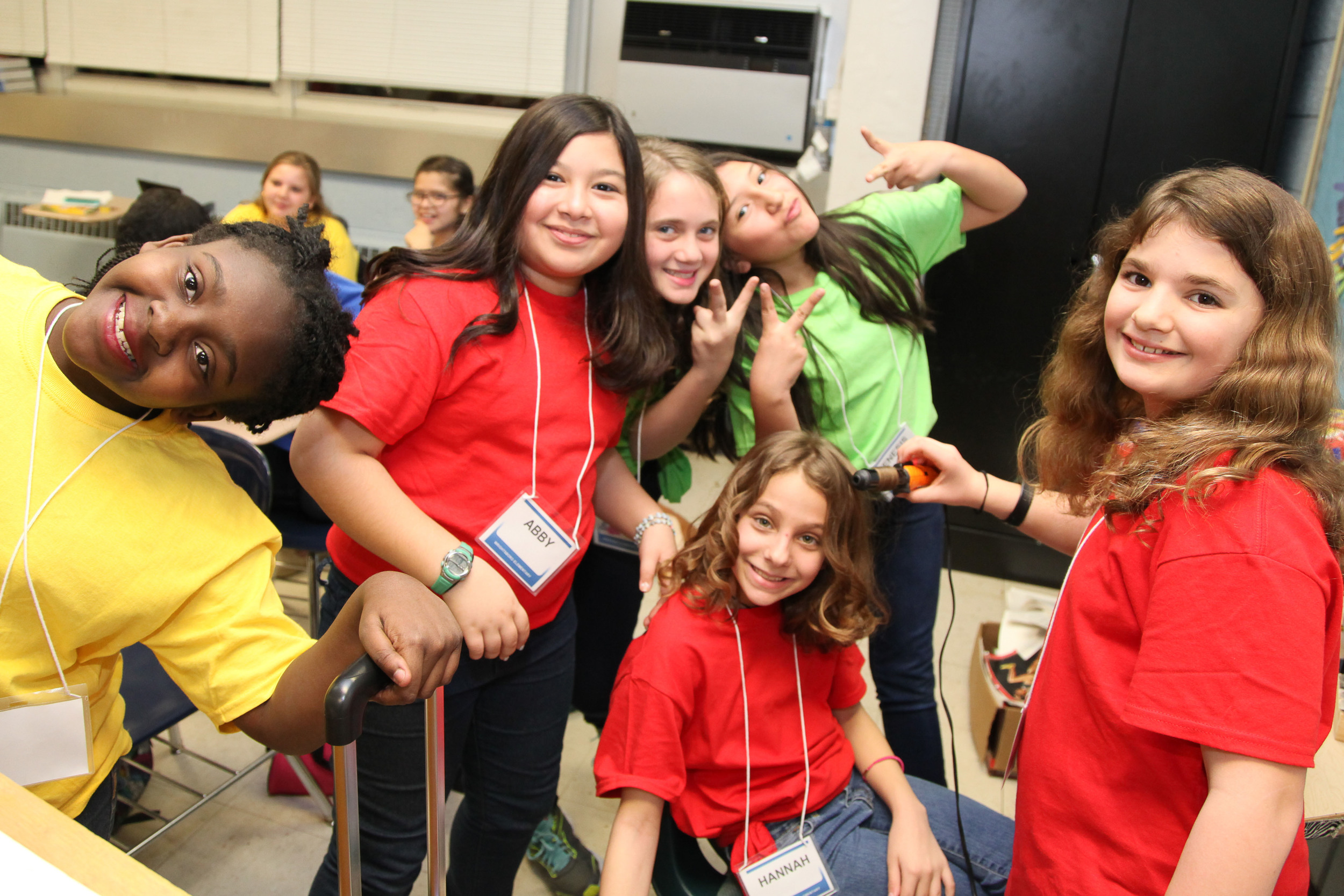
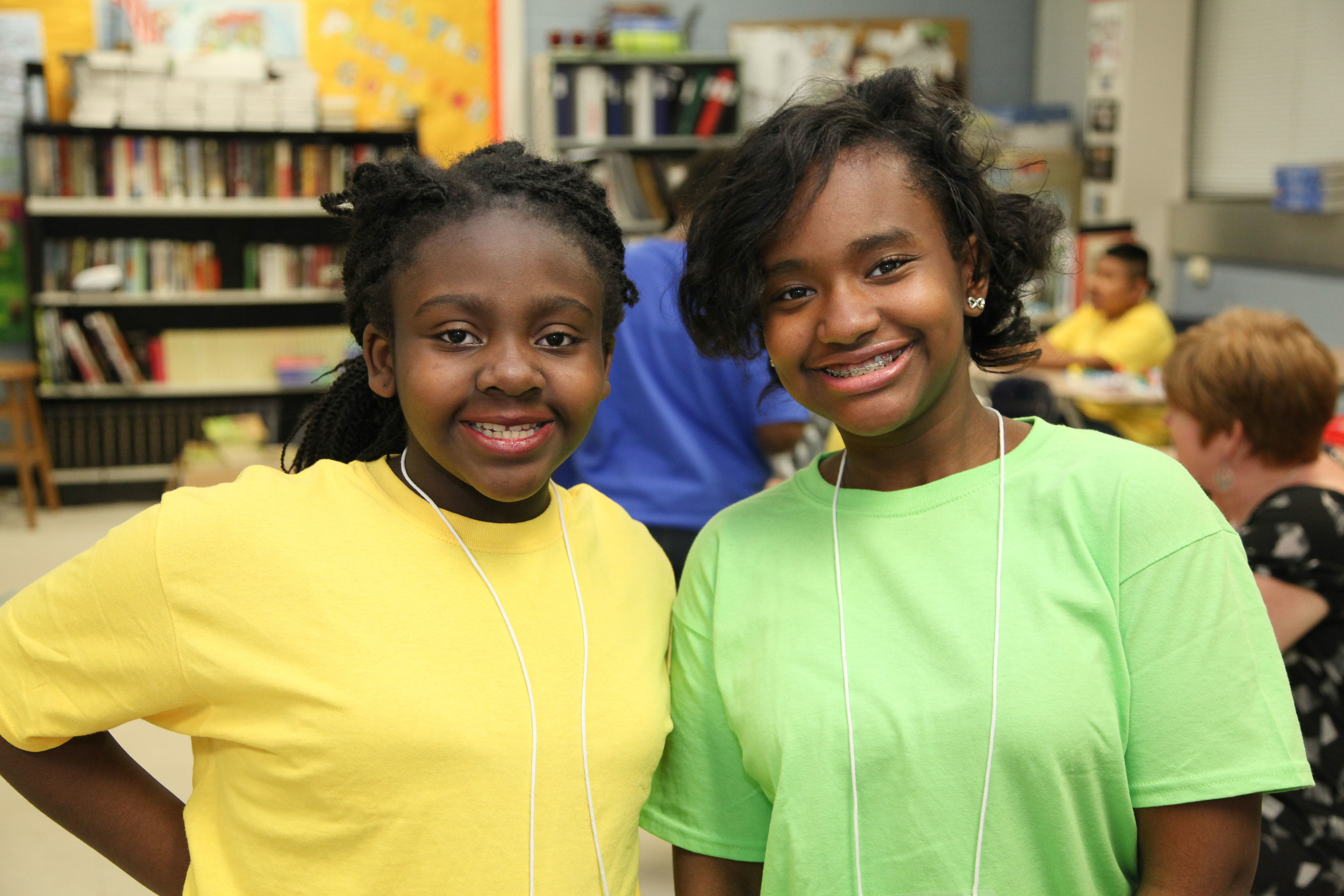
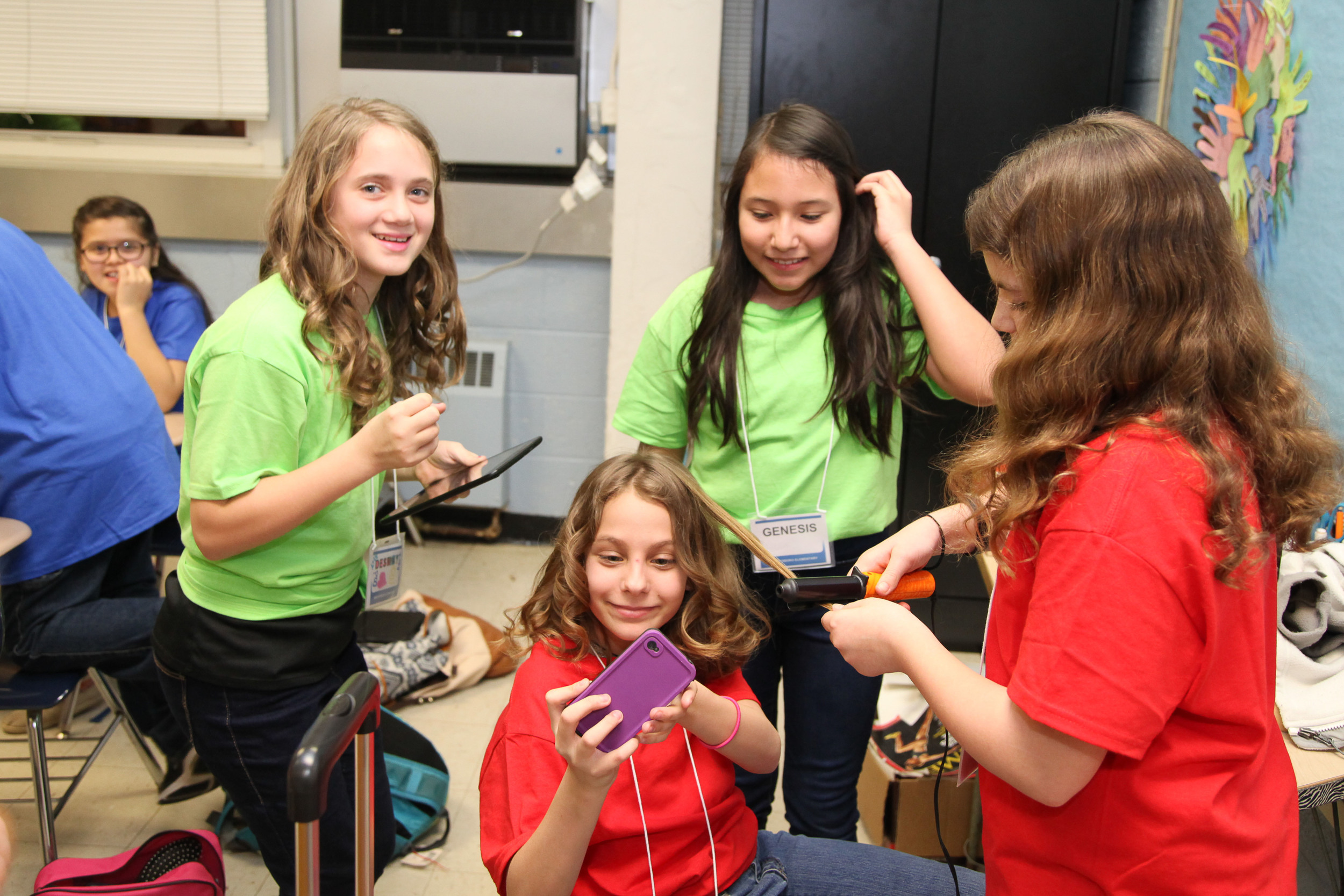
Want to bring Emily Arrow’s Creativity Road Show to your school? Click here.
All photography provided by Erin Whittle Photography.
Animation-ish Lands in Wake County Public Schools!
The GT/AIG Basics Magnet Schools in North Carolina's Wake County and FableVision Learning have teamed up to use Animation-ish in their classrooms. On Jan. 15, 2016, key teachers and leaders from around the district gathered with Dr. Denine Jimmerson, Creativity Curriculum and Evaluation Specialist with the Reynolds Center for Teaching, Learning, and Creativity and Hannah O’Neal, Artist and Animator at FableVision Studios, to explore using animation in the classroom as a tool for deeper learning.
Lisa Thompson, director of Magnet Themes and Curriculum in Wake County, led the initiative with gusto!
“We hope to increase creative expression in many different subject areas across elementary and middle school elective courses and classes,” Lisa said.
Creativity is a much-needed skill for 21st Century Learners, and Wake County plans on using FableVision’s Animation-ish as a tool to promote deep learning across content.
And they also brainstormed FABULOUS ideas how to use Animation-ish as a rigorous tool in the teaching and learning process.
We are looking forward to this new collaboration between FableVision Learning and Wake County.
Stay tuned for more great things to come! Create Bravely!
FableVision Creative Educator Spotlight – Rayna Freedman
For this week's teacher spotlight, we salute Rayna Freedman! Rayna is a 5th grade teacher and Information Technology Specialist at the Jordan/Jackson Elementary School in Mansfield, MA. She is on the board of MassCUE and started a STEM literacy team in her district with several colleagues and administrators. Truly an amazing educator and colleague!
Rayna “connected the dots” between Peter & Paul Reynolds’ book - Full STEAM Ahead! – the first title in the twin brothers’ early reader chapter book series called The STEAM-Powered Adventures of Sydney & Simon. The series features twin mice who are truly creative problem-solvers. The book series helps underscore the notion that the “A” in STEAM education – is more than just mixing art into STEM studies – it is about the creative thinking that leads to invention and innovation. Bringing that concept to life, Full STEAM Ahead! features two curious, creative learners taking on water-themed challenges and learning – including the water cycle and Archimedes’ invention of the water pump.
As so many of our creative educators do, Rayna was able to activate the Full STEAM Ahead! story in the classroom – using it to teach the engineering design process. Freedman’s class chose six water-themed challenges - one teacher-driven, the other five “student-tested and student-approved.” Here’s a sampling of the projects they tackled:
One group created their own irrigation system using a network of paper funnels and straws. They tested their system by repeatedly attempting to successfully move water from the sink to the other end of the classroom, and adjusting the system continually in order to avoid leaks.
Another group placed white flowers in a glass of water and then added food coloring. In order to track the dye’s movement up the roots and into the flower, they attached construction paper to the flowers with an elastic band in order to chart how it travels up. The group also made lab sheets for other classes to use when attempting to replicate this phenomenon.
A third group similarly planted flowers. Instead of food coloring, they simply tracked the growth of the plants using data sheets.
In addition to creating lesson plans for their own purposes, Freedman’s class also helped teach others. Her students helped implement the Emerging Engineers Program, through which they taught some of the basics of STEAM thinking to kindergarten classes.
Thanks to Rayna and her students’ creative “arts & smarts”, we now have lesson plans available for ALL teachers to teach the engineering design process using the Full STEAM Ahead book. Click below for a downloadable PDF featuring details about the student-centered STEAM projects, including materials required for each experiment. Also, Freedman’s students wrote reflections on their experiences, which may be helpful for teachers to keep in mind when introducing this project to their own classes.
Follow Rayna on Twitter at @rlfreedm!
Autism Awareness Month Resources from FableVision Learning
April is Autism Awareness Month, and we have some great resources to help you explore diversity and discuss inclusion with your students. You can watch the free film online with your students today!
Written about a boy on the autism spectrum, I'm Here features a strong anti-bullying message and reminds us that all children — and the friendships they make — can take flight in unexpected ways. Consider adding this powerful book to your library!
Also, don't miss the FREE I'm Here Educator's Activity Guide, written by SARRC (The Southwest Autism Research & Resource Center) and designed by FableVision Learning. This guide comes with several detailed activities that will help you explore the themes of I'm Here with your students.
You might also consider integrating the book and film Wings of EPOH into your Autism Awareness activities. Wings of EPOH is the story of a young boy on the autism spectrum who goes on a journey with an unlikely friend, a butterfly named Epoh ("hope" spelled backward). It was written by acclaimed author and Holocaust survivor Gerda Weissmann Klein and lovingly illustrated by Peter H. Reynolds. There is a teacher's guide you can purchase as well.
We also recommend the following articles and websites, which offer a tremendous amount of information and other resources:
Huffington Post Blog: "Making a Difference: The World of Giving — April is Autism Awareness Month" by Lisa M. Dietz
SARRC (Southwest Autism Research & Resource Center) Website: There is a great deal of helpful information there! You can learn more about SARRC’s program offerings and social skills curriculum (see the FRIEND program info at the bottom of the page).
The Autism Society Website: Check out the "About Autism" and "Living With Autism" sections — they provide an enormous amount of information to help educate others about the autism spectrum.
Autism Speaks offers wonderful resources, too. Visit the "What is Autism?" page for a wealth of information. The Family Services section also has fantastic resources, and there is a blog section that connects families with children on the autism spectrum with other families. Lastly, Autism Speaks recently partnered up with the Home Depot, which will be selling blue Defiant LED Lanterns and blue light bulbs through the end of April. A portion of each sale will go to Autism Speaks to fund research, advocacy, family services, and awareness for families struggling with this disorder.
Easter Seals Metropolitan Chicago "maximizes independence and creates opportunities for people with disabilities and other special needs to live, learn, work and play in their communities by providing a lifespan of premier services." On their homepage, look under the What's New section — you'll spot some news articles about autism. You can also learn more about autism at their About Autism page.
Let us know how you'll be honoring Autism Awareness Month with your students. We love hearing what creative educators are up to!
Give Your Students an Affirmation of Awesomeness!
Peter H. Reynolds often emphasizes the importance of noticing and rewarding each and every student. Look around your classroom and see which students have been flying beneath your radar. All of your students want to feel connected with you, so we've created these Affirmations of Awesomeness for you to use! Pass them out to students as you notice them excelling, caring, helping, or just being themselves.
Mapping The World By Heart
Get to know "Mapping the World by Heart" by watching this animated video introduction! Author David Smith discusses this innovative geography curriculum.


































